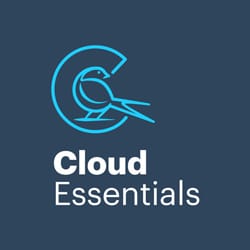
-
- How progressive you’re being with Microsoft for security and content management
-
- How long you need to preserve your email
-
- Whether or not you require ongoing journaling
-
- Whether you need to retain all your data or delete that which falls outside of retention requirements
-
- How sophisticated your eDiscovery and/or retention and disposition requirements are
-
- What operational access you require for end users and/or legal/risk managers
-
- How much business value and risk is tied up in your legacy email
-
- Projected costs
We’ll cover this topic in more detail in future, but for now, suffice to say that having an experienced partner on board can pay very real dividends during this process.
Transitioning content
Regardless of your destination, transitioning your content from Mimecast or an email archiving solution will require both extraction and processing. Proper preparation is critical from a budget, timeline and operations perspective. These are the main elements you’ll need to plan for:
Extraction
-
- Export costs – The typical way we see to get data out of Mimecast in bulk is to pay Mimecast by the Gb for their mass export service. (Smaller volumes can be exported piecemeal, by user or by search criterion.). You will need to log a call with Mimecast to request this and you’d do well to refer back to any exit clauses that you (hopefully) pre-negotiated in your Mimecast contract.
-
- Footprint expansion – Once your data is out of Mimecast, there will be no single instancing or compression. To accurately plan for that expansion in both your interim storage and final destination, you need validated statistics on the anticipated extracted data footprint.
-
- Exported data format – Mimecast exports data in zipped EML format. That will need to be processed to convert and/or restructure it, confirming all the necessary metadata is present, before it can be successfully ingested into your final destination.
-
- Export timelines – Mimecast imposes file size limits and throttling on exports. Make sure you plan for these delays in your projected timelines. You’ll also want to confirm your position in Mimecast’s export queue and get some timeline commitments if possible. Egress work is (understandably) low on their priority list, and that can have costly repercussions if your renewal anniversary is looming.
-
- Reporting – Proactive and diligent reporting is the best (and often only) way to be sure that the content you requested has been delivered and can be validated as such. Make sure you build good reporting processes into your project plan.
Processing
-
- Ingestion preparation – A Mimecast extraction is essentially a “data dump”. It takes processing to break this up into a usable format. Your desired output will vary depending on your chosen destination. Microsoft 365 requires email content in native Office 365 format, for example, before it can be imported into users’ mailboxes.
-
- Inactive users – Chances are, you’ve had some staff churn since switching on Mimecast. That means you’re going to have legacy content that doesn’t belong to an active email account. Make sure you have a work-around or alternative preservation strategy for this inevitability.
-
- Packaging – Don’t underestimate the importance of factoring in naming conventions, sizes, structures and tactics for handling anomalies when ingesting content. “Packaging” has a very real impact on success, and always goes more smoothly when planned in advance.
-
- Reporting – As with extraction, diligent reporting on data handling processes is critical, creating an invaluable audit trail of reports and decision-making.
Transitioning email hygiene and security
The last thing you want is to take the leap and transition out of Mimecast only to discover that you’re missing a bunch of features you rely on, or you’ve introduced a host of new vulnerabilities.
Make sure you have your security and email hygiene bases covered, with all your required features enabled (check your native Microsoft 365 security baseline), before ingesting so much as a single byte of email archive data. You’ll thank us later.
Transitioning users
The amount of planning you put into change management will depend on how much your end users and legal teams will need to interface with your new platform. The smoothest transitions start long before the actual move, preparing users for how, why and when changes will happen, and then guiding them through the transition as it occurs.
We can help with your email archiving challenges using Office 365!
The amount of planning you put into change management will depend on how much your end users and legal teams will need to interface with your new platform. The smoothest transitions start long before the actual move, preparing users for how, why and when changes will happen, and then guiding them through the transition as it occurs.
Take a look at our email archiving solution and get in touch to discuss your unique business challenges.
-
- Maximise utilisation of your Microsoft licence investment
-
- Consolidate content siloes for consistent (and cost-effective) information management
-
- Make use of retention policies for enhanced compliance, risk mitigation and operational value
-
- Minimise storage requirements and risk through policy-driven defensible deletion
-
- Maximise storage efficiency in a future-proof, agile format
-
- Empower legal/risk role players to manage, process and execute their responsibilities more efficiently and effectively
But that all relates to email churned since you properly adopted Exchange Online. Your legacy email in Mimecast might be a duplicate or extend back to your pre Microsoft 365 era.
It is then a case of deciding what your retention schedule is, and if you truly need to preserve the email currently residing in Mimecast. If you do, then where you are going to keep it?
Alternative destinations for email archives (outside Office 365)
Microsoft has outstanding native preservation capabilities, but it’s not a one-size-fits all solution. There are alternatives (including our own Microsoft-based Content Preserve) that can be more appropriate in certain circumstances.
The best destination for your legacy email archives will depend on numerous factors, including:
-
- How progressive you’re being with Microsoft for security and content management
-
- How long you need to preserve your email
-
- Whether or not you require ongoing journaling
-
- Whether you need to retain all your data or delete that which falls outside of retention requirements
-
- How sophisticated your eDiscovery and/or retention and disposition requirements are
-
- What operational access you require for end users and/or legal/risk managers
-
- How much business value and risk is tied up in your legacy email
-
- Projected costs
We’ll cover this topic in more detail in future, but for now, suffice to say that having an experienced partner on board can pay very real dividends during this process.
Transitioning content
Regardless of your destination, transitioning your content from Mimecast or an email archiving solution will require both extraction and processing. Proper preparation is critical from a budget, timeline and operations perspective. These are the main elements you’ll need to plan for:
Extraction
-
- Export costs – The typical way we see to get data out of Mimecast in bulk is to pay Mimecast by the Gb for their mass export service. (Smaller volumes can be exported piecemeal, by user or by search criterion.). You will need to log a call with Mimecast to request this and you’d do well to refer back to any exit clauses that you (hopefully) pre-negotiated in your Mimecast contract.
-
- Footprint expansion – Once your data is out of Mimecast, there will be no single instancing or compression. To accurately plan for that expansion in both your interim storage and final destination, you need validated statistics on the anticipated extracted data footprint.
-
- Exported data format – Mimecast exports data in zipped EML format. That will need to be processed to convert and/or restructure it, confirming all the necessary metadata is present, before it can be successfully ingested into your final destination.
-
- Export timelines – Mimecast imposes file size limits and throttling on exports. Make sure you plan for these delays in your projected timelines. You’ll also want to confirm your position in Mimecast’s export queue and get some timeline commitments if possible. Egress work is (understandably) low on their priority list, and that can have costly repercussions if your renewal anniversary is looming.
-
- Reporting – Proactive and diligent reporting is the best (and often only) way to be sure that the content you requested has been delivered and can be validated as such. Make sure you build good reporting processes into your project plan.
Processing
-
- Ingestion preparation – A Mimecast extraction is essentially a “data dump”. It takes processing to break this up into a usable format. Your desired output will vary depending on your chosen destination. Microsoft 365 requires email content in native Office 365 format, for example, before it can be imported into users’ mailboxes.
-
- Inactive users – Chances are, you’ve had some staff churn since switching on Mimecast. That means you’re going to have legacy content that doesn’t belong to an active email account. Make sure you have a work-around or alternative preservation strategy for this inevitability.
-
- Packaging – Don’t underestimate the importance of factoring in naming conventions, sizes, structures and tactics for handling anomalies when ingesting content. “Packaging” has a very real impact on success, and always goes more smoothly when planned in advance.
-
- Reporting – As with extraction, diligent reporting on data handling processes is critical, creating an invaluable audit trail of reports and decision-making.
Transitioning email hygiene and security
The last thing you want is to take the leap and transition out of Mimecast only to discover that you’re missing a bunch of features you rely on, or you’ve introduced a host of new vulnerabilities.
Make sure you have your security and email hygiene bases covered, with all your required features enabled (check your native Microsoft 365 security baseline), before ingesting so much as a single byte of email archive data. You’ll thank us later.
Transitioning users
The amount of planning you put into change management will depend on how much your end users and legal teams will need to interface with your new platform. The smoothest transitions start long before the actual move, preparing users for how, why and when changes will happen, and then guiding them through the transition as it occurs.
We can help with your email archiving challenges using Office 365!
The amount of planning you put into change management will depend on how much your end users and legal teams will need to interface with your new platform. The smoothest transitions start long before the actual move, preparing users for how, why and when changes will happen, and then guiding them through the transition as it occurs.
Take a look at our email archiving solution and get in touch to discuss your unique business challenges.





